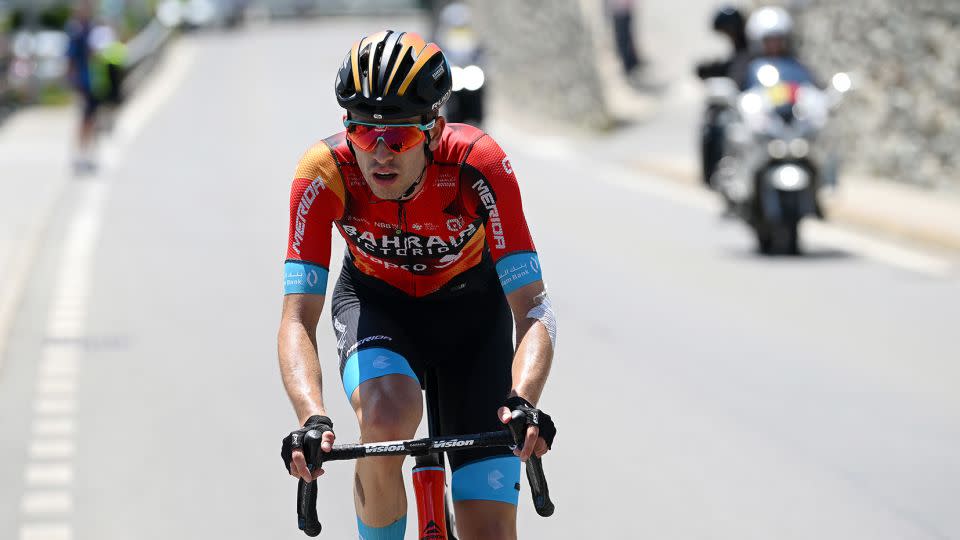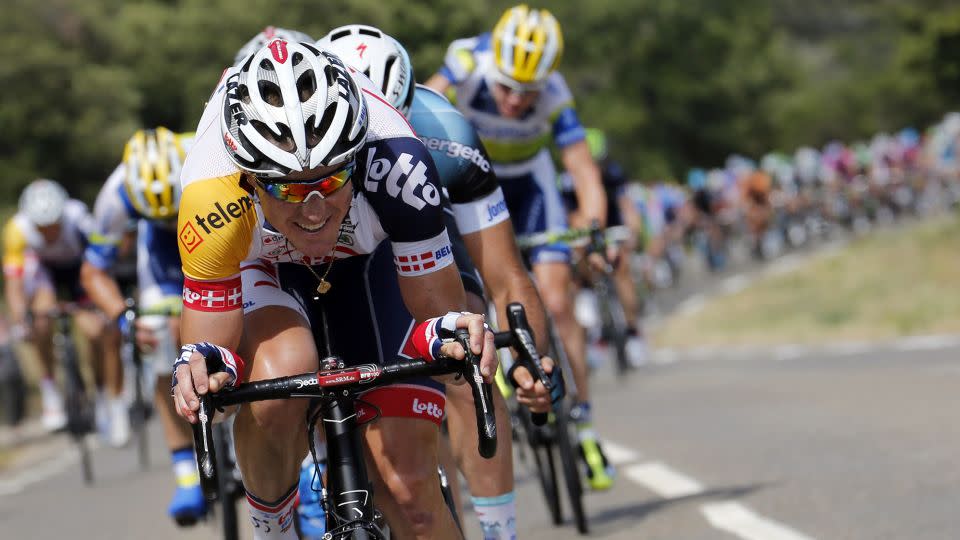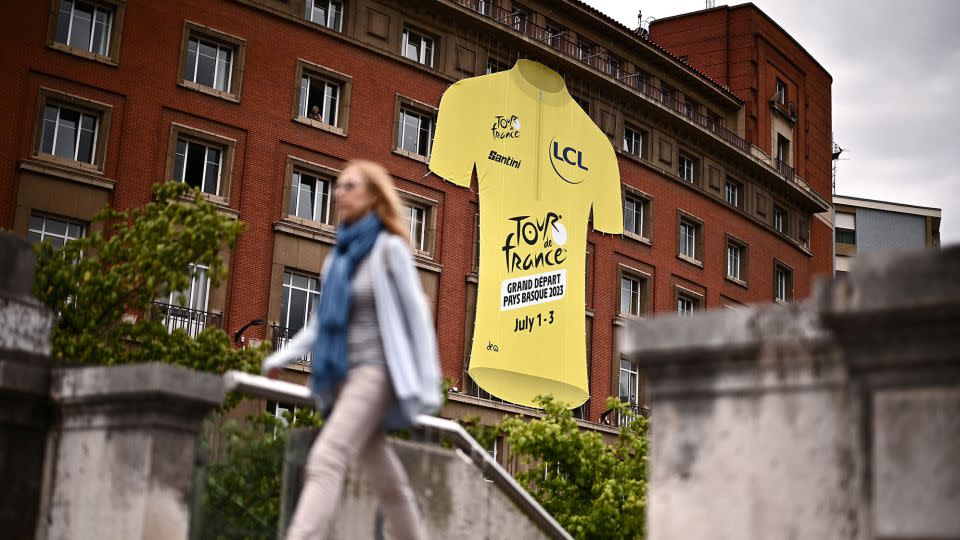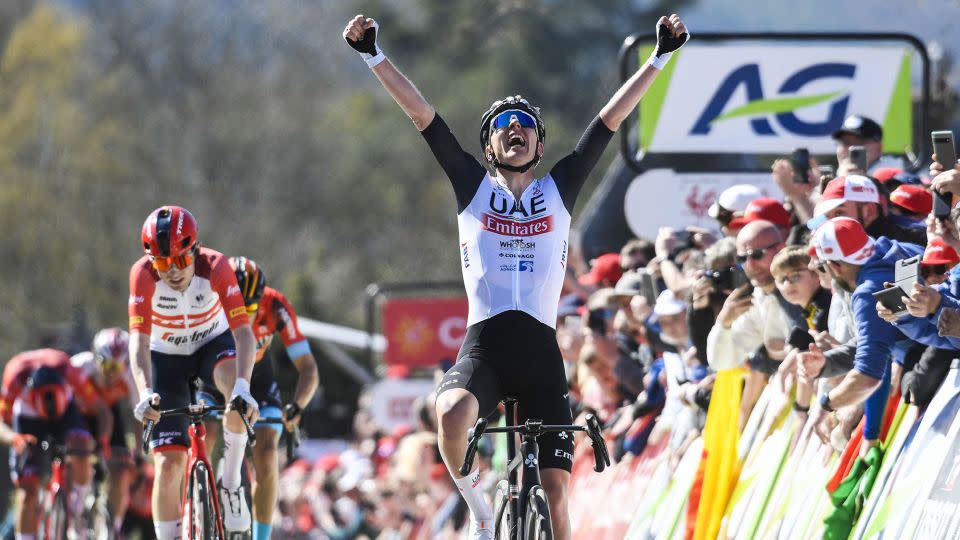Tour de France overshadowed by safety concerns following death of Swiss rider Gino Mäder
It’s a race that grips the world of cycling each year, but the prelude to the 2023 Tour de France, which starts on Saturday, has been overshadowed by concerns over safety that have raised existential questions for the sport.
In June, Swiss rider Gino Mäder died aged 26 following a crash on the fifth stage of the Tour de Suisse.
Almost 200 kilometers into the race, Mäder crashed at high speed with American rider Magnus Sheffield, race organizers said after the incident. They were descending the Albula Pass towards La Punt, where the stage ended.
Mäder fell into a ravine and was found motionless in the water before being resuscitated and transported to hospital in the city of Chur by air ambulance.
His death sparked emotional tributes but also raised concerns about the safety measures around elite cycling.
From improving technology and a changing dynamic in the peloton, cycling is evolving and some are calling for it to change – and fast to ensure greater safety for the riders.

Adam Hansen, a former rider who competed in the Tour de France eight times, is the newly-elected president of the Cyclistes Professionnels Associés (CPA) – the organization tasked with looking after the interests of professional cyclists.
Hansen told CNN Sport that, as bikes have become faster, professional cycling has become a “very dangerous sport.”
But it’s not just speed that’s the issue. In any bike race, much of the racing focuses on what’s happening in the peloton – the main body of cyclists – and how riders and teams jockey for position.
“You have probably heard this term in cycling, ‘there’s no more respect in the peloton.’ And what I believe this actually means is riders are being more dangerous in the peloton,” Hansen explained.
“In the first 150 kilometers of a 200-kilometer race, riders would respect each other, they won’t cut each other off, they won’t fight for a position when there’s more than 100 kilometers to go before the finish, they’re more relaxed. And now people are just fighting for every single spot and they’re sort of touching elbows and shoulders with other riders and just becoming more dangerous in that sense.”
Hansen says that riders won’t struggle for motivation in this year’s Tour, but Mäder’s death will likely be playing in their minds of some competitors at certain points.
“I know when there will be fast, high-speed descents, there’s definitely going to be some riders with let’s say that thought in the back of their head, and they’ll be a bit more nervous and a bit more cautious and maybe take less risk.”
Tom Pidcock, who rides for team Ineos, says Mäder’s death could result in some more cautious descending from riders.
“I think especially for everyone who was at the race [Tour de Suisse], that was pretty hard hitting,” the British rider told reporters on Wednesday. “I think I didn’t see a single rider take any risks on the last two stages after that incident.
“Personally, one of the things that hit me was it happened descending, which is something that I love. It showed me what the consequences can be when it goes wrong. I don’t take unnecessary risks but things can happen when we’re riding down a descent at 100kph in lycra.”

Hansen says that in his role as the president of the CPA, he has worked with riders to see how cycling could be made potentially safer.
From unified signage between races to help riders and safety nets on descents down to the minutia of how close a steward stands in front of a parked car, nothing is off the table for Hansen before he delivers his recommendations to the Union Cycliste Internationale (UCI) – cycling’s world governing body.
There is a growing swell of advocates for the addition of safety nets on high speed corners in an effort to catch cyclists falling over a precipice.
“In the rare situation in which somebody goes over the edge, having a small amount of netting there could save lives,” Jonathan Vaughters, manager of the EF Education Easy Post team, told The Guardian. “Safety is a very difficult topic in cycling. I saw a lot of suggestions from people about limiting speed on descents and that doing that would make it safer.”
Hansen adds that educating an increasingly youthful peloton is an important factor in making the sport safer.
“Riders have to be aware that cycling is a dangerous sport. And I think sometimes they forget this and they have to be educated well in this,” he explained. “And also there’s a lot of young good riders at the moment where in the past, if you look at the average age of the Tour de France … [it] was quite old, where today we’ve got 20-year-old’s doing it.
“So what I felt is you’re getting these super young guys doing big races like Dauphine in Switzerland and the Giro [‘d’Italia], the Tour [de France].
“Like this year in the Giro, I think a 19-year-old has done it two times before. And normally you’d be 24 years old and you’ve done five years of professional racing before doing a grand tour. So maybe it’s inexperience.
“These are things we need to look into more and definitely educate the riders the dangers of it and it’s not worth taking massive risks.”
CNN has contacted Tour de France race organizers to ask about any additional safety measures being implemented but did not receive a response at the time of publication.
Structure
The 2023 Tour de France will see the famous race celebrate its 120th anniversary.
The first stage – called the Grand Départ – is 182 kilometers long and starts from Bilbao, Spain – the host country of the first three stages before the Tour moves to France. Since the 1950s, the Tour has often started in a different country as a way of allowing fans from other nations to experience the race.
In total, there will be 21 stages including eight flat stages, eight mountain stages, four hilly stages, one individual time trial, and two rest days. The race will finish in Paris on the Champs-Élysées on Sunday, July 23.
The famous yellow jersey will be awarded to the winner of the individual general classification, with the green jersey given to the points classification winner.
The polka dot jersey is given to the best climber and the white jersey goes to the best young rider.

An epic duel
Jonas Vingegaard is the Tour’s defending champion. The Danish rider had come close in years prior to the 2022 race, but eventually claimed the yellow in dramatic fashion last year and has continued to look strong this season, winning the Critérium du Dauphiné in June.
Vingegaard, who rides for team Jumbo–Visma, will have to fend off the challenge of Tadej Pogačar, a two-time winner of the Tour de France, if he wants to win a second title.
Pogačar had enjoyed a brilliant start to the season but broke his wrist two months ago, only returning to competitive racing earlier this month.
If the Slovenian looks anything close to his best, it could prove to be a fascinating battle between Pogačar and Vingegaard. Last year, the two went head-to-head with Vingegaard eventually pipping the UAE Emirates star and the pair look likely to lock horns once again this year.

Elsewhere, 2019 Tour de France champion Egan Bernal is competing in his first Grand Tour event since suffering serious injuries in a crash last year.
The Colombian collided with the back of a bus, suffering back, leg, knee and chest injuries but is now part of an Ineos team hoping to climb back to the summit of men’s cycling.
How to watch
Viewers in the US can tune into USA Network and NBC to watch the action, while in the UK, the Tour de France is being shown on Eurosport and ITV.
For more CNN news and newsletters create an account at CNN.com

